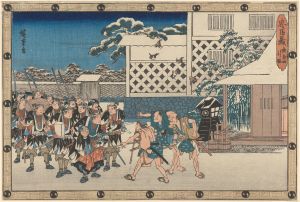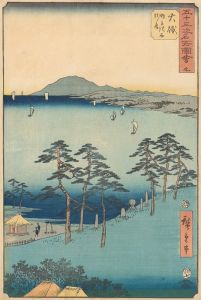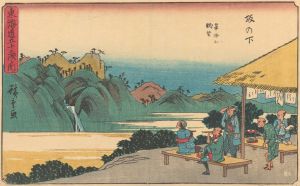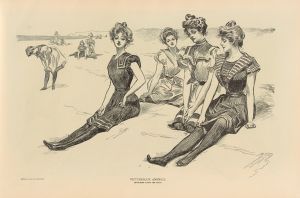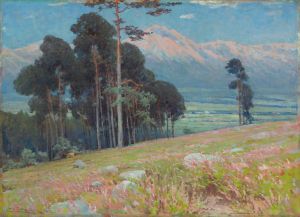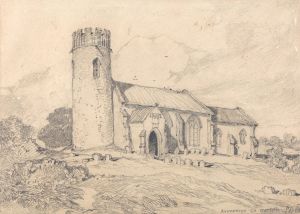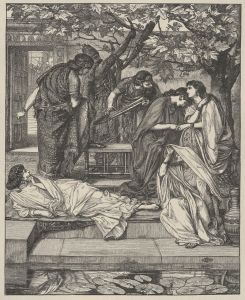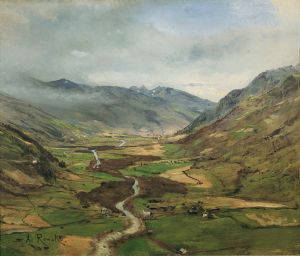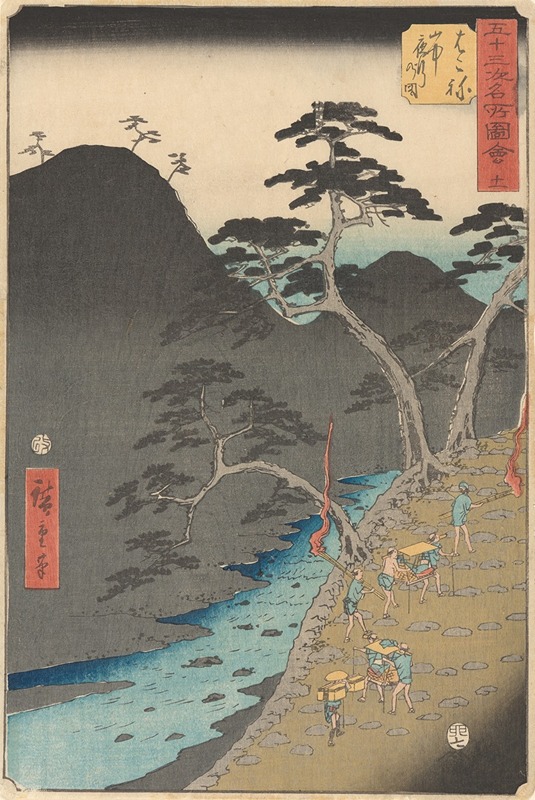
Hakone
A hand-painted replica of Andō Hiroshige’s masterpiece Hakone, meticulously crafted by professional artists to capture the true essence of the original. Each piece is created with museum-quality canvas and rare mineral pigments, carefully painted by experienced artists with delicate brushstrokes and rich, layered colors to perfectly recreate the texture of the original artwork. Unlike machine-printed reproductions, this hand-painted version brings the painting to life, infused with the artist’s emotions and skill in every stroke. Whether for personal collection or home decoration, it instantly elevates the artistic atmosphere of any space.
Andō Hiroshige, a renowned Japanese ukiyo-e artist of the Edo period, is celebrated for his landscape prints and his ability to capture the essence of Japan's natural beauty. One of his notable works is "Hakone," which is part of his famous series "The Fifty-three Stations of the Tōkaidō" (Tōkaidō Gojūsan-tsugi no Uchi). This series, created between 1833 and 1834, consists of 55 woodblock prints that depict the scenic views and travel experiences along the Tōkaidō road, the main route connecting Edo (modern-day Tokyo) to Kyoto.
The "Hakone" print specifically represents the Hakone station, which was one of the most challenging and picturesque parts of the Tōkaidō route. Hakone was known for its steep mountains and beautiful landscapes, making it a significant and memorable stop for travelers. Hiroshige's depiction of Hakone captures the rugged terrain and the serene beauty of the area, showcasing his skill in rendering landscapes with a sense of depth and atmosphere.
In the "Hakone" print, Hiroshige employs his characteristic use of perspective and color to convey the majesty of the mountains and the tranquility of the surrounding environment. The composition often includes travelers navigating the winding paths, emphasizing the journey's arduous nature and the travelers' perseverance. The use of vibrant blues and greens highlights the lushness of the landscape, while the detailed depiction of the mountains and trees reflects Hiroshige's keen observation of nature.
Hiroshige's work on the Tōkaidō series, including the "Hakone" print, played a significant role in popularizing the genre of landscape prints in Japan. His ability to capture the transient beauty of nature and the human experience of travel resonated with the public, making the series highly successful and influential. The prints not only served as artistic expressions but also as visual travel guides, offering viewers a glimpse into the diverse and picturesque scenery of Japan.
The "Hakone" print, like many of Hiroshige's works, is characterized by its delicate lines, harmonious composition, and the artist's unique ability to evoke a sense of place. Hiroshige's influence extended beyond Japan, impacting Western artists such as Vincent van Gogh and Claude Monet, who admired his innovative use of perspective and color.
Today, Hiroshige's "Hakone" and the entire Tōkaidō series are celebrated as masterpieces of ukiyo-e art. They continue to be studied and appreciated for their artistic merit and their historical significance in documenting the Edo period's travel culture. Hiroshige's work remains a testament to the enduring appeal of Japan's natural beauty and the timeless allure of the journey.





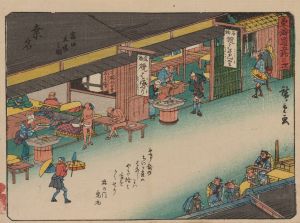
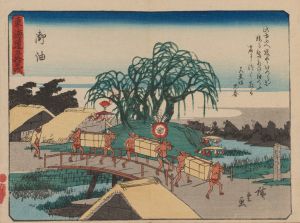
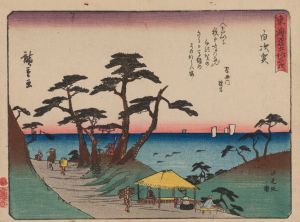
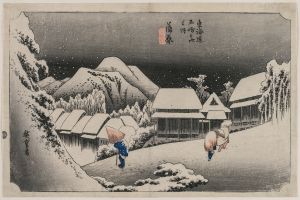
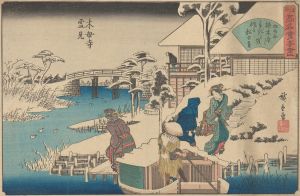
![Tora-no-mon-gai; Aoi Hill, Outside the Tiger Gate [Tora-no-mon]](/imgs/213040/s/ando-hiroshige-toranomongai-aoi-hill-outside-the-tiger-gate-toranomon-6629cde0.jpg)
